HTC 10 vs iPhone 6S: Which should you buy?
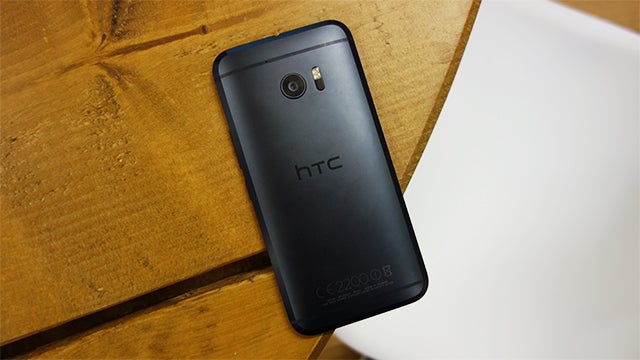
HTC 10 vs iPhone 6S: Should Apple be worried?
After a 2015 to forget, HTC is back in the big time. The brand’s first virtual reality headset, the Vive, is now on sale and the Taiwanese company has just announced the HTC 10, its brand-new flagship phone.
Like every big phone we’ve seen so far this year, it’s a powerhouse in the specs department. But it also signals a slight change in design philosophy from HTC. It’s a lovely looking phone with a bunch of interesting and genuinely useful features.
How does it compare to Apple’s flagship, the iPhone 6S, though? Now that we’ve spent a good deal of time with both phones, we can take a closer look.
Related: iPhone 7
WATCH: HTC 10 video review
HTC 10 vs iPhone 6S: Design
HTC 10: 9mm thick, 161g, all-metal body, Carbon Grey/Topaz Gold/Glacier Silver
iPhone 6S: 7.1mm thick, 143g, Series 7000 anodised aluminium back, Space Gray/Silver/Gold/Rose Gold
While it’s not the peak of Apple design, the iPhone 6S is still a well designed phone that has influenced a load of other devices on the market (hello, HTC One A9). Its combination of metal and glass feels great, the slightly curved sides mean it’s easy to hold, and the compact dimensions keep it usable in one hand.
The antenna lines that snake their way around the back are not to everyone’s taste and the camera bump means texting on a table is a rocky experience, but generally speaking we’re fans of the iPhone 6S design. It might not be the prettiest iPhone, but it’s the most practical design Apple has come up with.
Part of that is down to the latest model’s switch to Series 7000 anodised aluminium, which makes it a great deal tougher than even the ostensibly identical iPhone 6.
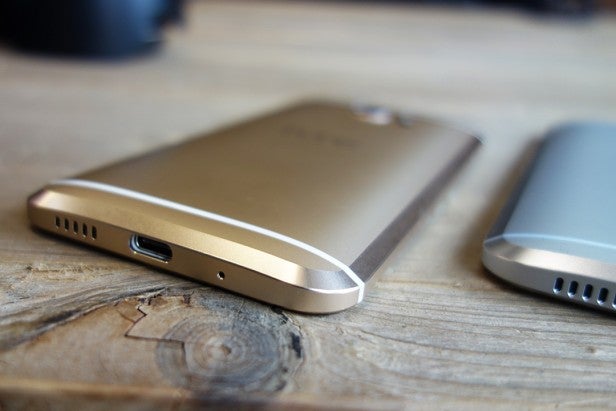
HTC also uses a lot of metal and glass in the construction of the HTC 10, and the clean logo-free front with a home-button below the display is reminiscent of Apple’s devices. The back, though, has much more of a curve while the heavily chamfered edges show a touch of design flair missing from Apple’s latest flagship. It’s also quite thick – almost 2mm thicker than the iPhone 6S – and a fair bit heavier to boot, but its tapered back diminishes the impact of both.
We’re also fans of the way HTC has integrated the antennas, making them look like part of the design in a way that Apple failed to do in the iPhone 6S.
Interestingly, HTC has also reverted to using dedicated capacitive buttons in place of the virtual keys recommended by Google. It’s something you’ll get used to, but we have to say we’d prefer that the home button was clickable like the iPhone 6S equivalent.
We’d argue that the HTC 10 is the better looking phone of the two, but that the more understated iPhone 6S is perhaps the more practical for day to day use.
HTC 10 vs iPhone 6S: Screen
HTC 10: 5.2-inch Super LCD5, 2,560 x 1,440, 565ppi
iPhone 6S: 4.7-inch IPS LCD, 1334 x 750, 326ppi
Big phones are great, but in our eyes the screen sweet spot for most people still lies between 4.7 and 5.2-inches. Exactly where these two phones fit.
Apple’s iPhone 6S is the smaller of the two at 4.7-inches, while HTC’s 10 is a far from pocket-busting 5.2-inches. Both are just about usable with one hand, the iPhone slightly more for obvious reasons.
While the screen-sizes are relatively similar, the amount of pixels packed into each display isn’t.
Related: iPhone SE review
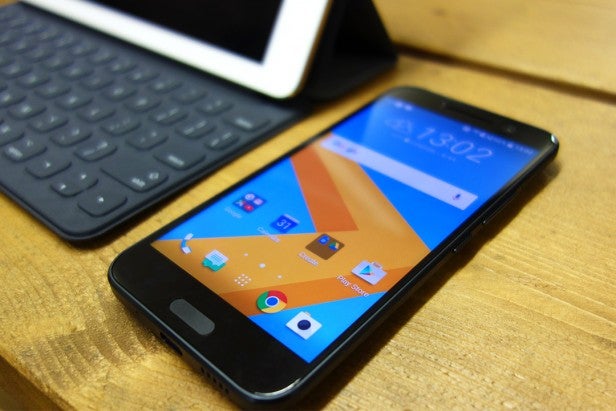
The LCD IPS panel on the iPhone 6S uses a 1,334 x 750 resolution, meaning it’s only marginally better than 720p. The HTC 10 on the other hand has a quad-HD LCD 5 display, which equates to 2,560 x 1,440. Basically, it has a load more pixels packed into the screen – 565ppi for the HTC 10 vs 326ppi for the iPhone 6. This means that web pages and images will render with a lot more detail on the HTC.
Specs don’t tell the whole story and you really shouldn’t write off the iPhone simply because there are less pixels. As it’s an IPS panel, the iPhone has great viewing angles and it’s tough to pick out individual pixels. Colours lack the vibrancy of AMOLED screens like those of the Galaxy S7, but they are often much truer to life (though the Galaxy S7 scores pretty highly on this front too).
We also found that the HTC 10 has fantastic colour vibrancy, especially for an LCD, with an impressively wide colour gamut. The iPhone’s colours are nice and accurate, but the tech is essentially a generation behind the HTC.
The HTC 10 beats the iPhone 6S for sheer screen quality. It’s bright, vibrant, detailed, and a pleasure to look at.
HTC 10 vs iPhone 6S: Performance
HTC 10: Snapdragon 820 quad-core CPU, Adreno 530 GPU, 4GB RAM, 32GB/64GB storage with microSD expansion
iPhone 6S: Apple A9 64-bit dual-core CPU, 2GB RAM, 16GB/64GB/128GB storage
If you’re worried that either of these phones might not be able to handle the day-to-day smartphone toil, don’t be. These are two super-speedy devices, powered by the latest silicon.
HTC has kitted the 10 out with a load of high-end specs. You’ve got the Snapdragon 820 CPU, 4GB RAM, and 32GB or 64GB worth of internal storage. We found the phone to be really quick, with smooth multitasking and a complete lack of lag. It didn’t get hot either, something the One M9 was known for.
The iPhone 6S is powered by Apple’s own A9 chip, along with 2GB RAM. That might be half of what’s inside the HTC 10, but iOS is known for its much better RAM management than Android, so don’t let that bother you too much.
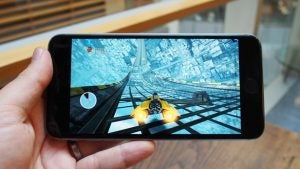
In terms of comparisons, these two chips top the current AnTuTu table, with the Snapdragon 820 taking a lead in a couple of key areas. However, in real world usage they’re impossible to distinguish, with both making short work of games and multitasking alike.
It’s a shame that the iPhone 6S still starts at 16GB of storage. It should be at least 32GB and unlike the HTC 10 it doesn’t have any sort of expandable storage.
However, it does have a 128GB storage option, which is double the maximum HTC 10 offering. Of course, you’ll have to pay through the nose for that extra storage, but at least the option’s there.
HTC 10 vs iPhone 6S: Camera
HTC 10: 12-megapixel, laser and phase detection autofocus, OIS, f/1.8 lens, 1/2.3″ sensor, 1.55 µm pixel, ‘Ultrapixels’, 4K video, 5-megapixel front camera with OIS
iPhone 6S: 12-megapixel rear camera, f/2.2 lens, 1/3″ sensor, 1.22µ pixels dual LED flash, Focus Pixels, 4K video recording, 5-megapixel front camera
Of all the features touted by these two, it’s the cameras that take centre stage. Both have 12-megapixel rear-facing sensors, but there’s quite a lot to differentiate these two very capable snappers.
Let’s start with the HTC 10. While it ditched the feature for last year’s poorly received One M9, the Taiwanese brand has restored the UltraPixel branding for the 10.
What’s an UltraPixel we hear you cry? Well, it just means the pixels inside the sensor are larger than you’d normally expect to see on a phone. They’re certainly larger than those inside the iPhone 6S, and it helps give this phone some serious low-light shooting capabilities.
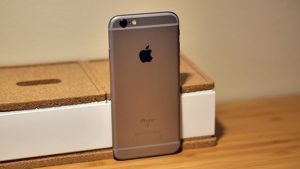
This is enabled without a drop in megapixel count by virtue of the fact that the HTC 10’s image sensor is larger than the iPhone 6S version.
When it comes to autofocus, Apple uses something called Focus Pixels in the iPhone 6S, which is Apple’s term for phase detection autofocus. These work together with the image signal processor inside the phone to improve skin tone accuracy and stabilisation.
Of course, the HTC 10 has its own phase detection autofocus system, as well as laser autofocus, so it’s not left behind on the quick-and-accurate AF front.
One other important feature the HTC 10 has that the iPhone 6S doesn’t is optical image stabilisation (OIS). This again helps reduce blurriness in night-time photos and keeps video footage stable.
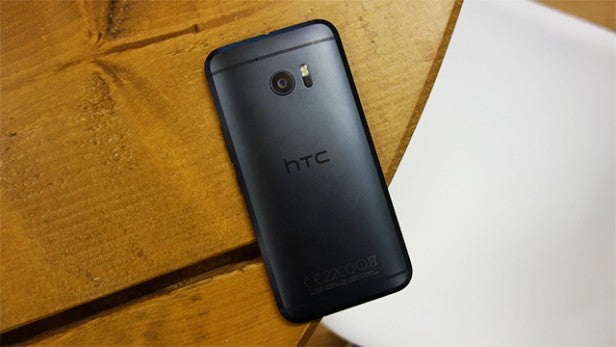
The proof of the pudding is in the eating, of course. We found the HTC 10 camera to be fast, accurate, and capable of taking nice looking daytime shots. It’s also very fast to lock onto your target. However, we also found that images could occasionally look a little flat, and that it could struggle when particularly bright elements make their way into the frame.
The iPhone 6S has a stunning camera, even though it’s six months old now and technically inferior. The app might lack some of the snazzy pro features the HTC 10 has, but it’s fast and captures great pictures in a variety of conditions – a testament to Apple’s image processing algorithms and its tight hold on the hardware.
We’d argue that the iPhone wins out in day-to-day usage by capturing balanced, realistic colours and simply producing reliably good pictures. However, the HTC 10 is generally better for low-light and indoors photography.
Around the front both phones have a 5MP sensor. HTC is again using those larger UltraPixels, but HTC’s handset benefits from OIS for smoother video and steadier selfies. Apple’s iPhone 6S does have one trick up its sleeve for improving those selfies however. It uses the Retina display as a True Tone flash to brighten up the pictures, which works surprisingly well.
Both phones shoot video in 4K too, and they each have a set of slow-mo modes available.
HTC 10 vs iPhone 6S: Software
HTC 10: Android 6.0.1 Marshmallow, Sense 7.0 UI
iPhone 6S: iOS 9.3
Of course, the biggest difference between the two phones is the operating system they run. The iPhone 6S runs on iOS, the HTC 10 on Android 6.0.1 Marshmallow.
Both have their merits, of course, but what’s good to know is that, unlike a lot of Android phones, HTC hasn’t messed around too much with the Google OS. Yes, some things look a bit different, but HTC has cleaned up the software and ditched a load of useless bloatware to make a cleaner experience.
The company has actually worked directly with Google to cut down on duplicate apps, so it doesn’t double up unnecessarily when it comes to things like email, music, and image gallery. Where HTC has included its own apps and services, it’s moulded them to fit Google’s Material Design, so they don’t stand out like a sore thumb.
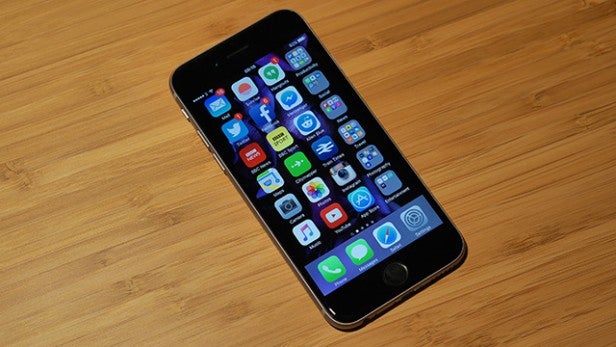
In fact, we found Android 6.0 with Sense 7.0 to be one of the best Android experiences yet, and superior to the stock experience in certain ways. This means it’s a major contender to the iPhone 6S with iOS 9.3 on the software front.
Of course, iOS 9 still has the advantage when it comes to timely updates and a superior app ecosystem, and some people will prefer Apple’s clean and simple approach to UI design, particularly if you also use a Mac in your day to day work, where the tie-up between the two platforms is compellingly seamless.
HTC 10 vs iPhone 6S: Battery
HTC 10: 3,000 mAh
iPhone 6S: 1,715 mAh
The HTC 10’s battery is much, much bigger than the iPhone 6S’s. In fact, at 3,000 mAh versus 1,715 mAh, it’s not far off being twice as big.
HTC’s claims of two-day battery need to be taken with a pinch of salt, though. We managed to get through a day of moderate-to-high usage with plenty in the tank, which is about par for the course for a modern top-end phone.
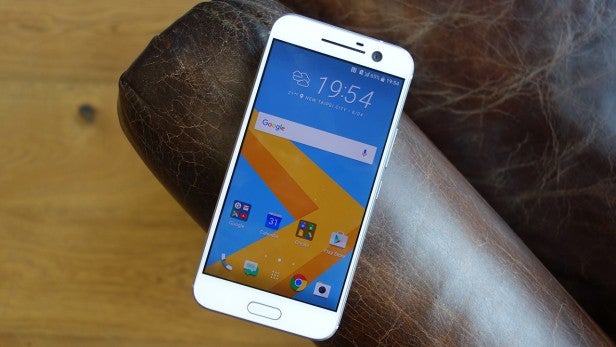
The iPhone 6S perhaps isn’t quite as strong, but it can still get you through a day without fuss, unless you really hit it hard.
Another way in which the HTC 10’s battery trumps the iPhone 6S is recharge times. You can get a full charge through the HTC 10’s USB-C Quick Charge 3.0 enabled adaptor in less than an hour, whereas it takes twice that for the iPhone 6S.
HTC 10 vs iPhone 6S: Extra features
HTC 10: Hi-Res audio, BoomSound speakers
iPhone 6S: 3D Touch, Touch ID
One particular feature the HTC 10 has in its locker that the iPhone 6S simply cannot compete with is audio quality. Along with supporting Hi-Res 24-bit audio and coming bundled with a pair of Hi-Res earbuds, the HTC 10 has BoomSound stereo speakers that pump out rather impressive audio.
You can also buy a set of noise-cancelling JBL headphones that take power from the USB-C port. Apparently Apple is planning to do something similar with the Lightning port on the iPhone 7, but that’s a discussion for another time.
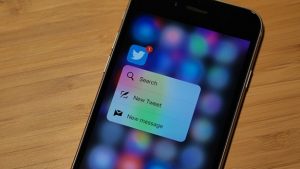
Even though the HTC 10 has arguably taken a backwards step from the HTC One M9 and its stereo front-facing speakers, the middling single downward facing speaker on the iPhone 6S simply can’t beat this set-up. Apple might think it’s the home of music with its sprawling Apple Music and iTunes services, but for pure audiophile service, you can’t get better than the HTC 10 right now.
However, the iPhone 6S has 3D Touch, the tech that makes the display pressure-sensitive. It’s a neat trick that’s great for sneaking a look at a webpage before it fully loads or quickly snapping a selfie through the icon of the camera app.
We’re expecting a version of this to become native with the next version of Android, so expect to see something similar in the HTC 11. For now, Apple’s ahead of the game.
Verdict
2015 wasn’t the best for HTC’s phones, but things are set to be a lot different this time around. The HTC 10 is an extremely impressive phone, and certainly one of the very best in the Android market. It looks good, has the usual array of high-end specs and premium design features, and its audiocentric additions are a nice touch (if a little niche).
The iPhone 6S is always going to be the top-dog for a lot of people, but the HTC 10 shouldn’t be dismissed. We rated the two phones the same in our respective reviews, so it shouldn’t come as any surprise that we can’t separate them here.
Want the very latest specs, a super-sharp display and class leading audio performance? The HTC 10 is for you. Want the best selection of apps, an unassuming one-handed design, and a camera that won’t let you down? Then it’s iPhone 6S all the way.


